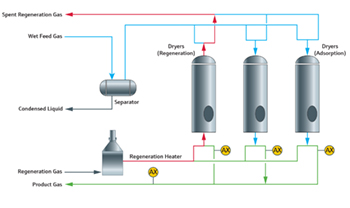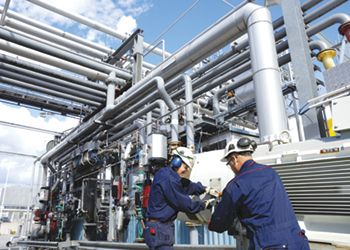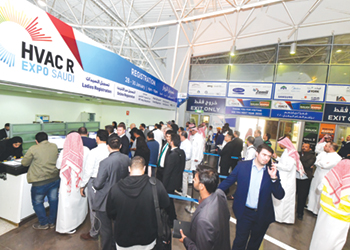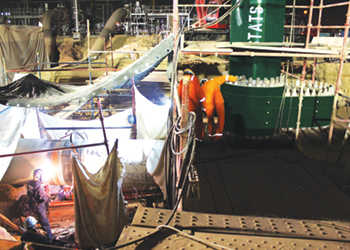
 Figure 1: Molecular sieve dehydration system showing H2O analyser measurement points (AX)
Figure 1: Molecular sieve dehydration system showing H2O analyser measurement points (AX)
TDLAS analysers possess characteristics that are useful for monitoring and detecting H2O breakthrough from molecular sieve adsorbent beds, writes GARY ENGELHART, Product Line Marketing Manager, SpectraSensors, Inc, an Endress+Hauser Company
Raw natural gas is a complex mixture of methane, hydrocarbon condensates (natural gas liquids – NGLs), water and contaminants; hydrogen sulphide (H2S) and carbon dioxide (CO2). Natural gas processing involves separating methane (CH4) from NGLs and removing entrained contaminants. Amine treatment units are commonly used in gas processing plants to remove H2S and CO2 from natural gas. In operation, sour gas is contacted with an aqueous amine solution which removes H2S and CO2 by chemical reaction and absorption. The sweet gas exiting an amine treatment unit is saturated with water vapour. Some water can be removed by passing the wet gas through a knock-out drum, compression and cooling.
MOLECULAR SIEVE DEHYDRATION
 |
|
Figure 2: The measurement cell in a TDLAS analyser |
Molecular sieve dehydration is a highly efficient means of removing water from natural gas and was patented by Union Carbide in 1962. It must be used to obtain the very low H2O concentration (< 0.1 ppm) required in low temperature and cryogenic processes for NGL separation and liquefied natural gas (LNG) production.
This system typically consists of 3 or 4 dryer vessels operated in parallel with a piping system that allows a saturated adsorbent bed to be taken off line for regeneration with heated gas (as shown in Figure 1). Wet gas flows down through the adsorbent bed where mass transfer and adsorption occur.
Monitoring the H2O concentration in the outlet gas from each dryer vessel enables the operator to rapidly detect H2O breakthrough in an adsorbent bed and switch gas flow to a dryer vessel with a freshly regenerated adsorbent bed. Rapid detection of H2O breakthrough helps prevent gas with elevated levels of H2O from reaching cryogenic equipment used to separate and recover NGLs, or to liquefy LNG.
Under normal operating conditions gas exiting a molecular sieve dryer vessel contains no detectable H2O, or only trace-level (sub-ppm) concentrations of H2O. Many natural gas processing plants and all LNG plants limit the H2O content in gas exiting their molecular sieve dryer vessels to < 0.1 ppm. In this case a typical alarm or control point to trigger adsorbent bed switchover would be around 70 ppb. Operating a molecular sieve dehydration system at these levels requires analysers with a low limit of detection (LOD) and limit of quantitation (LOQ).
Tunable Diode Laser Absorption Spectroscopy (TDLAS)
The technologies initially adopted to detect moisture breakthrough, aluminium oxide (Al2O3) capacitance probes and quartz crystal microbalances (QCMs), date back to the 1960s and 1970s. Both techniques utilise H2O sensing elements that must be in direct contact with the natural gas stream, entrained contaminants (H2S, CO2, Hg), and any compounds injected into the gas stream (methanol, ethylene glycol, corrosion inhibitors). The sensing elements in Al2O3 probes and QCMs cannot distinguish between H2O and entrained contaminants resulting in an unavoidable positive measurement bias which complicates detection of H2O breakthrough in molecular sieve drying systems.
Tunable Diode Laser Absorption Spectroscopy (TDLAS) analysers use a non-contact, laser-based technique to measure H2O in hydrocarbon process streams. The near-infrared (NIR) light emitted by the laser is selective and specific for H2O molecules, enabling concentration measurements based upon molar absorptivity.
The basic design of a measurement cell in a TDLAS analyser is depicted in Figure 2. The principal components of the cell are; an optical head housing the laser and thermo-electric cooler (TEC) and a solid-state detector, the cell body with a mirror positioned at the end opposite the laser, gas inlet and outlet connections, and temperature and pressure sensors.
TDLAS analysers have an exceptionally fast response to analyte concentration changes because gas is flowing continuously through the measurement cell. Once the gas inside the measurement cell is displaced by fresh gas any change in analyte concentration and absorption will be detected instantaneously. This is an important design and performance characteristic for monitoring and rapidly detecting H2O breakthrough from molecular sieve adsorbent beds.
To achieve the low LOD and LOQ required in this application, SpectraSensors developed and patented a spectral subtraction technique (differential spectroscopy) that enables trace-level measurements of H2O in natural gas and other hydrocarbon gas streams. The LOD achieved using differential spectroscopy is 10 ppb, which provides the capability to detect moisture breakthrough at concentrations below alarm and control point settings.
 |
|
Figure 3: Interior view of a TDLAS analyser for trace-level H2O measurement – |
Validation of analysers used for monitoring H2O at the outlet of molecular sieve dryer vessels is important because under normal operating conditions no H2O will be present for extended periods of time. The TDLAS analysers are equipped with a permeation tube system to perform automated validation checks at user-designated time intervals to verify the analyser is operating properly and responding to H2O in the dry gas stream (Figure 3).
SUMMARY
On-line monitoring of the H2O concentration in gas exiting molecular sieve dryer vessels helps detect moisture breakthrough and prevent gas with elevated levels of H2O from entering and freezing in heat exchangers and cryogenic equipment in natural gas processing and LNG plants.
TDLAS analysers possess design and performance characteristic that are particularly useful for monitoring and rapidly detecting H2O breakthrough from molecular sieve adsorbent beds with the capability to detect moisture breakthrough at concentrations much below alarm and control point settings.





















































































